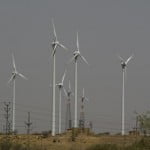The rebound in capital expenditure by the Indian Railways has sparked a rally in the shares of companies that depend on the national carrier for business.
Shares of Titagarh Wagons Ltd, Texmaco Rail and Engineering Ltd and Kalindee Rail Nirman (Engineers) Ltd have gained in the range of 20-40% in the last three months.
The stocks are rising on hopes that the thrust on capacity expansion and modernization will boost order inflows for the companies, especially wagon manufacturers.
However, the initial capital expenditure trends are pointing otherwise.
Data till October says that the Railways is spending more money in construction, conversion and doubling of tracks, rather than rolling stock, which covers wagons and coaches.
In fact, the actual expenditure on rolling stock till October this year is 47% less than the year-ago period. Compared with this, the expenditure on the construction of new lines has risen 29% and on doubling of tracks by almost half (49%). Investments in tracks generate orders for engineering, procurement and construction firms.

Even otherwise, the Railways’ wagon business is yet to turn remunerative for many firms. Titagarh and Texmaco, in the September quarter results, said they did not accept the Railways’ offer on wagon tender for 2015-16 due to pricing issues.
Of course, this is not to undermine the business potential from the Railways. But as the Railways tries to address congestion problems, its focus, at least in the initial years, is expected to be on doubling of tracks and efficiency improvement rather than on putting more wagons into the system.
According to a Morgan Stanley research, a focus on efficiency improvements—such as speed and a faster turnaround—can reduce the additional requirement for rolling stock to some extent.
“While we expect (an around) 50% increase in freight to be carried, if the railways are able to increase freight train speeds by 50% (from the poor 25km/hour now currently vs ~35-45 km/hour globally), the current rolling stock should be enough to deal with the increased cargo,” Morgan Stanley said in a note. “Of course, the Railways are unlikely to just focus on speed and there should also be replacement demand, which means that we will see more rolling stock purchases (but we suspect that it is likely to be more concentrated towards locos, than wagons/coaches).”





